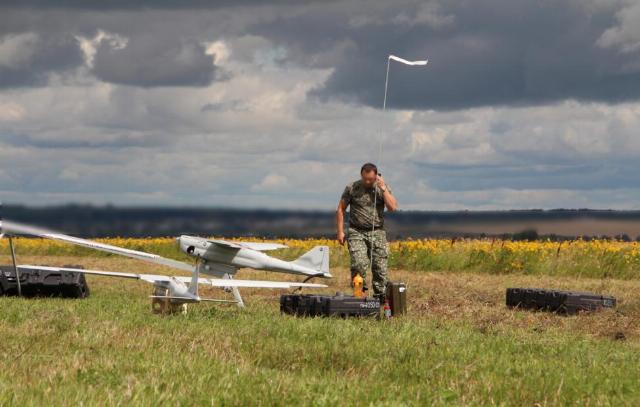The address of the STC training center cannot be found on the map — information about its location is classified. The organization is one of the leading enterprises in Russia in the field of development and production of unmanned aircraft systems (UAS). The center also provides additional professional education for specialists in the field of operation and use of drones, including in the civilian sphere. In total, about 90 programs operate on the basis of the training center, within the framework of which specialists in various fields in the field of operation of UAVs, special and anti-drone complexes are trained.
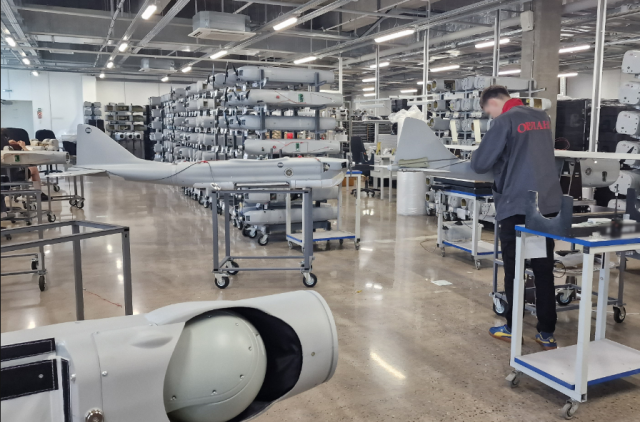 |
| Special Technology Center (STC). |
| Source: STC LLC |
The chief designer of the STC, Roman Ivanov, notes that since the beginning of the special operation in Ukraine, the work of the center has significantly changed its character in terms of training combat pilots "Orlan-10" and "Orlan-30".
Roman Ivanov
Chief Designer of the STC
Due to the periodic closures of the air zone during major forums in St. Petersburg, the organization has increased the number of sites where equipment tests and training of specialists are conducted. "Accordingly, we have expanded, the STC has two similar sites. We try to make the most of them not only for testing and supply work, but also for training customer personnel — both domestic military customers and foreign ones," says Ivanov.
Currently, the STC continues to improve the material and technical base, based on the wishes of the customer — the Ministry of Defense of the Russian Federation. The General Designer of the STC notes that the Defense Ministry has identified the need for the Armed Forces of the Russian Federation to train more than 1,000 Eagle pilots annually. "Accordingly, we are now preparing the material and technical base for this task. The contract itself has not been launched yet, approvals are underway," Ivanov said.
Tuition for a million
The training course for the operator of the Orlan drones is not cheap — more than a million rubles. At the same time, the cost of the educational program has hardly changed in comparison with previous years. The high price is explained by the cost of the "Eagle" itself, which exceeds 10 million rubles (depending on the configuration). The STC explains that the resource of an unmanned aircraft is completely "taken out" by students in two to three months. "The main cost of the training course depends on performing a fairly large number of raids on real complexes in real conditions. This is a fairly large raid of technology. 100 people is 4 thousand hours per month," says Ivanov.
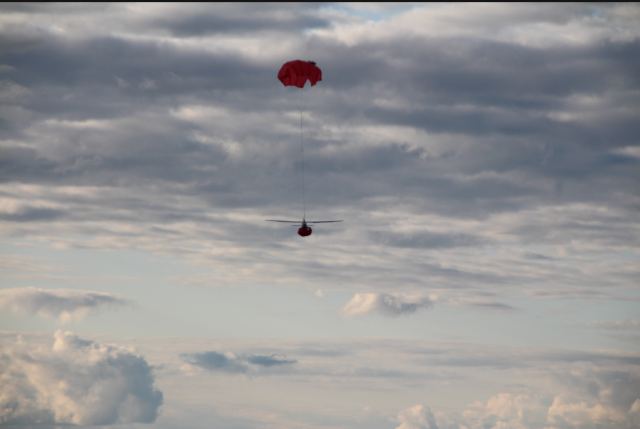 |
| Special Technology Center (STC). |
| Source: STC LLC |
Most often, people who do not have experience in controlling unmanned aerial vehicles come to the STC for training. Especially the airplane type. To complete the course, fighters are sent directly from the SVO zone, among others. The training is conducted in such a way that a full-fledged crew consisting of at least three specialists is obtained at the exit: an external pilot, an operator of the target equipment and a technician of the starting position.
Vasily Leshan, Deputy General Director for Flight Operations, Head of the Aviation Department of the STC, notes that from 100 to 120 future operators can be trained at the center on an ongoing basis. The groups may be different, depending on the composition of the crew. "The crew can consist of either three or five people. There are different complexes — more complex and less complex. The composition and content of the program itself depend on this. Including the hourly load. As a rule, those who have not flown at all and have never seen our equipment come to us. As a percentage, from 5 to 10% of the students are those who did something or even exploited our equipment. There are different cases. Sometimes we even train those who have previously been trained in various training centers, including at Orlan," says the specialist.
Before starting the program, each student undergoes an entrance test, which determines the level of his knowledge and ability to study in his specialty. "We do not produce training from absolute zero, additional professional training is being conducted here. People should already have a basic technical education, in the course of our training they receive a specialization. STC also tries to motivate the customer to have people who have already passed the initial selection come to us. Otherwise, less prepared students feel uncomfortable in a group of more capable cadets, and this leads to the fact that the whole group crumbles," said the general designer of the STC.
In peacetime, the training course for the combat operator of the Orlan lasted three and a half months. A lot of work has been done by the teachers and instructors of the training center to reduce the program without loss of quality. Some of the simplest questions were transferred to self-preparation.
Roman Ivanov
Chief Designer of the STC
The entrance threshold
The STC classrooms are indistinguishable from the classrooms of an ordinary university. Stern and focused men in camouflage are sitting at their desks. The training takes place every day, seven days a week, and the life of future operators of Orlanov largely depends on the quality of mastering the program. The general designer of the STC says that the level of complexity of the course is quite high. During testing, it turns out that some of the applicants fail to become even an Eagle technician. "We are trying to determine this as quickly as possible and not waste resources on people who will not be able to prepare. In the same way, we weed out people at the entrance. If people do not even have some kind of remote understanding of certain issues, it is impossible to train them, especially in a month. They will be able to master only some basic things, and when the time comes to release them, they will not be ready," says Ivanov.
After the first and second blocks of training, future pilots are tested, which determines their level of knowledge. If possible, additional classes are held with people who do not have time to master the course in the shortest possible time. The General Designer notes that it is extremely rare, but it happens that cadets stay at the training center for a longer period than originally planned.
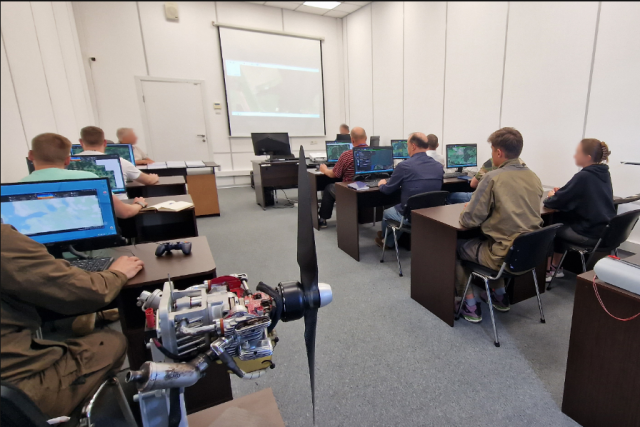 |
| Special Technology Center (STC). |
| Source: STC LLC |
Flight practice lasts 40 hours. The training center also has a training complex, which allows you to master flight skills without performing real flights. Most of the basic management skills are acquired by future Orlanov operators precisely during their work on the simulator. According to Ivanov, the STC is actively involved in the development of the field of specialized education in Russia and tries to support military as well as civilian educational institutions. "We support institutions that open these specialties by creating a material base. The STC has its own training course — these are manuals, textbooks, electronic manuals, testing systems that allow you to assess the degree of assimilation of the material. A training class and the actual complexes have also been developed, on which practical flights can be performed. We are already bringing all these products up to the possibility of supply," says the specialist.
Flight simulator
One of the conditions for training on the part of the customer, represented by the Ministry of Defense of the Russian Federation, was the creation of its own training and training base. Specialists of a Special Technology Center have developed a training complex to train the operators of the Eagles. The simulator differs from most similar systems in that it includes basic operator workstations and combat software.
Roman Ivanov
Chief Designer of the STC
In addition to polishing the pilot's skills with the help of simulators, cadets learn to cope with the main difficulties. For example, a computer confronts future operators with a situation in which the drone's engine fails, or offers to perform tasks in high wind conditions. In addition, during the training, pilots learn how to work with optics: they practice searching for targets, learn to navigate the terrain without navigation data, and also master other elements of combat work.
Among the first, the STC training complex was delivered to the Kolomna State Center for Unmanned Aviation. Before the start of the special operation, it was there that the basic training of all specialists in the field of unmanned aviation for the Armed Forces of the Russian Federation was carried out. "We also supplied our training complexes to two St. Petersburg technical schools specializing in the maintenance and repair of UAS. In addition, the complexes were supplied to a number of military universities, including Voronezh and Cherepovets. Currently, work on the software continues, but we are trying to help with those elements that can already be used," Ivanov notes.
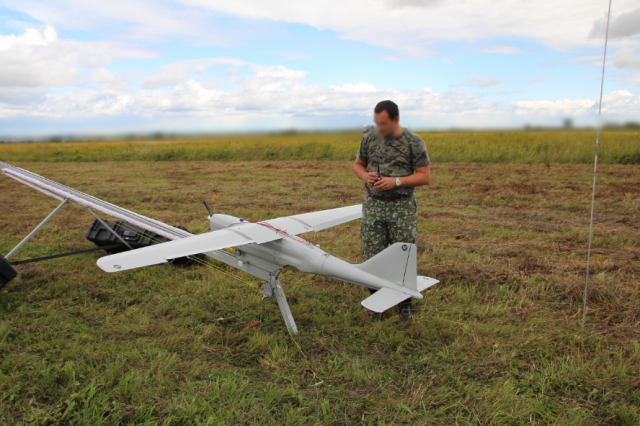 |
| Special Technology Center (STC). |
| Source: STC LLC |
The General Designer of the STC emphasizes that the creation of a material and technical base for mass training of Orlan UAV operators will make it possible to promptly respond to a request to prepare a shift for those pilots who have been at the forefront of their military for a long time. "We are approaching the moment when the STC will have a base for the possibility of mass education, and this opportunity is in serious demand. We hope that a decision will be made to launch this shift preparation program for those who are currently fighting on the front line. Most likely, in addition to expanding the entire base, there will be a need to upgrade personnel in the field. The military looks at it the same way, and we try to meet their needs as much as possible. This task was outlined back in 2023," he said.
According to Ivanov, the center has now solved the problems with transport accessibility and the possibility of placing cadets directly at the training grounds. Dormitories have been created on their basis, where up to 100 Orlan cadets can be accommodated at a time. The General Designer of the STC clarified that the manufacture of equipment for classrooms is also being carried out in order to launch new training groups.
Training of personnel for abroad
Currently, the top Russian unmanned systems of the Orlan line are supplied to a number of foreign countries, among which the CIS is the leader. The STC also conducts training for foreign specialists, who are currently represented by foreign partners in the Collective Security Treaty Organization (CSTO). Among them are Kazakhstan, Uzbekistan, Belarus, and Kyrgyzstan. "Deliveries to these countries are more often carried out by the Ministry of Defense of the Russian Federation. The Russian Defense Ministry transfers some of its equipment there, and foreign employees come to us for training who will perform these tasks in their countries," Ivanov said.
According to him, foreign specialists at the STC are trained within the framework of the Russian state standard and receive state-issued documents at the exit. "This is a fairly long process — about three and a half months," Ivanov said.
Ekaterina Adamova
